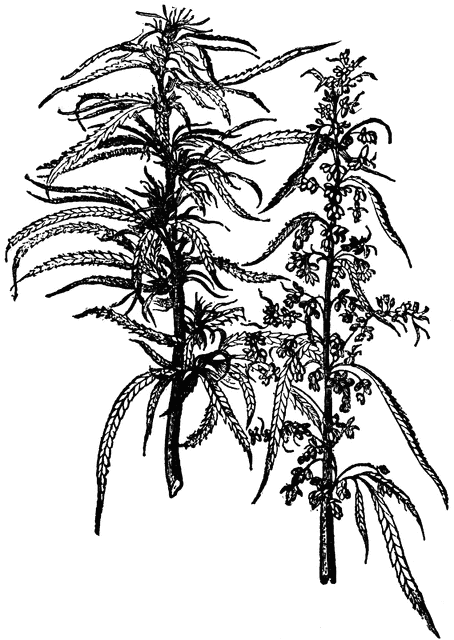
The inner portion of the stem contains the hurd, which is used for paper and building materials. The grain contains valuable oil used for cosmetics and cooking. The oil is low in saturated fats and contains a mixture of omega-6 and omega-3 fatty acids as well as gamma linolenic acid (GLA), a nutraceutical compound.
The bushel weight of hemp is 44 lb. with about 27,000 seeds per pound (60 seeds/g or 17g/1,000 seeds).
Industrial hemp and marijuana belong to the same species (Cannabis sativa) and both produce a psychoactive drug known as delta-9 tetrahydrocannabinol (THC). Hemp has been cultivated for centuries as a source of fibre for rope, sail, and clothing and the seed crushed for oil, food and feed.Hemp is commonly dioecious (separate male and female plants).
The male plants die after pollinating, causing uneven maturity and varying fibre quality. Plant breeders in Europe have developed monoecious (male and female flowers on the same plant) varieties which are more desirable for fibre production. The monoecious female trait must be maintained by strict roguing during pedigree seed production.
Cannabis is an annual dioecious (unisexual) flowering plant. To elaborate, it germinates from a seed, reaches sexual maturity,reaches sexual maturity, reproduces and dies all within one year when growing wild. Its flowers are unisexual so males and females are distinct plants, but hermaphrodites have been continually documented.
Modern cultivation techniques can be employed to extend a plant’s natural life cycle, sometimes almost indefinitely through cloning, allowing favorable phenotypes to exist continually without relying on the blind luck associated with random genetic shuffling present from natural sexual reproduction. The time for a branch to form roots is between 5 and 20 days, following which the branch can be considered an independent plant capable of full growth, with the same genetics as its mother.
The entire cannabis life cycle is described below; clones begin as little more than a branch, until advantageous roots form at which time the plant most closely resembles a seedling, and eventually moves into a full vegetative phase
Bio of Hemp
